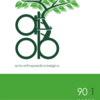Treatment of presumed aseptic non-union of the humeral shaft by osteosynthesis combining intramedullary nailing and screw plate
non-union, nailing, plate, humerus
Published online: Apr 23 2024
Abstract
In 2020, the most common treatment for presumed aseptic non-union of the humeral shaft seems to be decortication, often associated with bone autografting, and stabilized by a screw plate. We propose to evaluate an original technique of rigid osteosynthesis combining intramedullary nailing and screw plate. Between January 2004 and January 2020, 45 patients underwent treatment of presumed aseptic non-union of the humeral shaft by osteosynthesis combining intramedullary nailing and a screw plate. The minimum radio-clinical follow-up was one year postoperatively. The series included 19 men and 26 women with a mean age of 53 years (range 19-84 years). Bone consolidation was achieved in 43 patients, a rate of 95.5%. Comparing patients who achieved bone consolidation with the two failed consolidations did not reveal any statistically significant factor. Interobserver agreement was almost perfect (k=0.93) for the use of the RUST for humeral shaft fractures treated with intramedullary nailing and screw plate. In our study, the treatment of presumed aseptic non- union of the humeral shaft with an osteosynthesis combining intramedullary nailing and screw plate gives, with 95.5% of bone consolidation, results equal to or even superior to the different treatments currently described in the literature.
